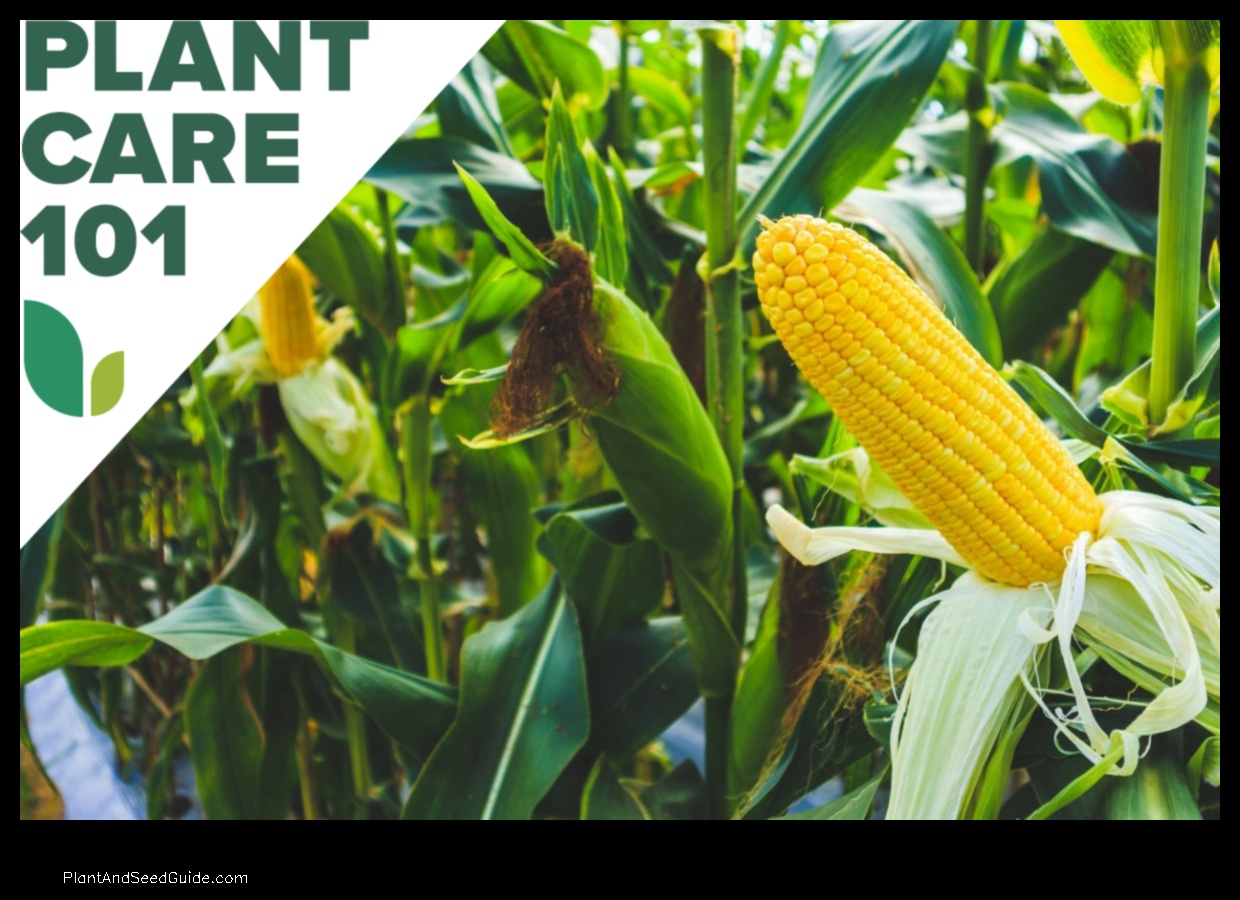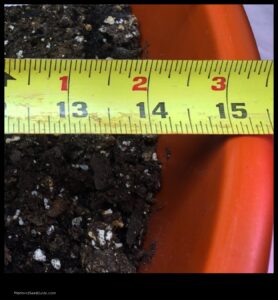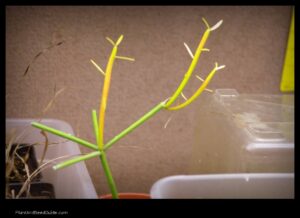
How to Transplant a Corn Plant
IWhen to transplant corn plants
How to transplant corn plants
Tools and materials needed for transplanting corn plants
Steps to transplant corn plants
VCaring for transplanted corn plants
Common problems with transplanting corn plants
How to prevent transplant shock in corn plants
FAQ
Conclusion

IWhen to transplant corn plants
The best time to transplant corn plants is when the seedlings have at least two sets of true leaves and are about 6 inches tall. This is typically about 2-3 weeks after germination.
If you transplant corn plants too early, they may not be able to tolerate the stress of being moved and may not survive. If you transplant corn plants too late, they may not have enough time to establish roots before the first frost.
To determine if your corn plants are ready to be transplanted, carefully dig up one of the seedlings and examine the roots. The roots should be white and healthy, and the seedling should have at least two sets of true leaves.
How to transplant corn plants
Transplanting corn plants is a relatively simple process, but there are a few things you need to do in order to ensure success.
First, you need to choose the right time to transplant. Corn plants are best transplanted when they are young and have at least two sets of true leaves.
Once you have chosen the right time to transplant, you need to prepare the soil. The soil should be well-drained and fertile. If the soil is not well-drained, you can add some sand or compost to improve drainage.
Next, you need to dig a hole in the soil that is the same depth as the pot the corn plant is currently in. The hole should be wide enough to accommodate the roots of the corn plant.
Carefully remove the corn plant from the pot and place it in the hole. Backfill the hole with soil and tamp it down gently.
Water the corn plant thoroughly and apply a layer of mulch to help retain moisture.
Once the corn plant is transplanted, you need to care for it as you would any other corn plant. Water the plant regularly, fertilize it as needed, and protect it from pests and diseases.
With proper care, your transplanted corn plants should thrive and produce a bountiful harvest.
Tools and materials needed for transplanting corn plants
The following tools and materials are needed for transplanting corn plants:
- Spade or trowel
- Gloves
- Watering can
- Fertilizer
- Garden hose
- Labels
Steps to transplant corn plants
To transplant a corn plant, follow these steps:
- Prepare the new planting site by digging a hole that is the same depth as the corn plant’s root ball.
- Loosen the soil around the corn plant’s roots.
- Gently lift the corn plant out of the ground and place it in the hole.
- Backfill the hole with soil and tamp it down firmly.
- Water the corn plant thoroughly.
VCaring for transplanted corn plants
After transplanting your corn plants, it is important to provide them with the proper care in order to ensure their success. Here are a few tips for caring for transplanted corn plants:
- Water your corn plants regularly, especially during dry periods.
- Fertilize your corn plants with a balanced fertilizer every 2-3 weeks.
- Weed around your corn plants regularly to keep weeds from competing for water and nutrients.
- Protect your corn plants from pests and diseases.
By following these tips, you can help your transplanted corn plants grow strong and healthy.
Common problems with transplanting corn plants
There are a few common problems that can occur when transplanting corn plants. These include:
- Transplant shock
- Damping off
- Root rot
- Insects
- Diseases
Transplant shock occurs when a plant is moved from one environment to another and is unable to adjust to the new conditions. This can cause the plant to wilt, become stunted, or even die.
Damping off is a fungal disease that can affect seedlings and young plants. It causes the stems of the plants to rot at the soil line, which can eventually kill the plant.
Root rot is a fungal disease that can affect corn plants at any stage of growth. It causes the roots of the plant to rot, which can eventually kill the plant.
Insects can also be a problem for corn plants, especially when they are young and small. Some of the most common insects that attack corn plants include aphids, corn borers, and earworms.
Diseases can also affect corn plants. Some of the most common diseases that affect corn plants include corn smut, corn rust, and southern corn leaf blight.
It is important to be aware of these common problems and to take steps to prevent them from occurring. By following these tips, you can help to ensure that your corn plants are healthy and productive.
How to prevent transplant shock in corn plantsTransplant shock is a condition that can occur when a corn plant is moved from one location to another. It can be caused by a number of factors, including:
Mechanical damage: When a corn plant is transplanted, its roots are often damaged. This can make it difficult for the plant to absorb water and nutrients, which can lead to wilting and death.
Environmental stress: Corn plants are adapted to specific environmental conditions, such as soil type, sunlight, and temperature. When a corn plant is transplanted to a new environment, it may not be able to tolerate the changes, which can lead to stress and death.
Disease: Corn plants that are transplanted are more susceptible to disease than plants that are not transplanted. This is because the roots of the transplanted plants are often damaged, which makes them more vulnerable to infection.
There are a number of things that can be done to prevent transplant shock in corn plants. These include:
Select healthy plants: When choosing corn plants to transplant, it is important to select healthy plants that are not showing any signs of stress.
Prepare the soil: The soil in the new location should be well-drained and fertile. It should also be free of weeds and pests.
Water the plants thoroughly: Corn plants need to be watered thoroughly after they are transplanted. This will help to reduce transplant shock and help the plants to establish themselves in the new location.
Protect the plants from pests and diseases: Corn plants that are transplanted are more susceptible to pests and diseases than plants that are not transplanted. It is important to protect the plants from these threats by using pesticides and fungicides.
By following these tips, you can help to prevent transplant shock in corn plants and ensure that they thrive in their new location.
Q: When is the best time to transplant corn plants?
A: The best time to transplant corn plants is in the spring, after the last frost.
Q: What tools and materials do I need to transplant corn plants?
A: You will need a shovel, a trowel, a watering can, and some compost or fertilizer.
Q: How do I transplant corn plants?
A: To transplant corn plants, dig a hole in the new location that is about twice the size of the corn plant’s root ball.
Backfill the hole with soil and water the corn plant well.Carefully remove the corn plant from its original pot or garden bed and place it in the hole..
Q: How do I care for transplanted corn plants?
A: Transplanted corn plants need to be watered regularly and fertilized every few weeks. They should also be protected from pests and diseases.
Q: What are some common problems with transplanting corn plants?
A: Some common problems with transplanting corn plants include transplant shock, root rot, and pests.
Q: How can I prevent transplant shock in corn plants?
A: To prevent transplant shock in corn plants, you can:
Transplant them when the weather is cool and cloudy.
Water them regularly and deeply.
Fertilize them every few weeks.
Protect them from pests and diseases.
Q: What is transplant shock?
A: Transplant shock is a condition that can occur when a plant is transplanted from one location to another. It is caused by the stress of being moved and can lead to wilting, yellowing leaves, and stunted growth.
Q: How do I treat transplant shock in corn plants?
A: To treat transplant shock in corn plants, you can:
Water them regularly and deeply.
Fertilize them every few weeks.
Protect them from pests and diseases.
Prune off any damaged leaves or branches.
Q: What is root rot?
A: Root rot is a fungal disease that can affect corn plants. It is caused by a fungus that attacks the roots of the plant, causing them to rot. Root rot can lead to wilting, yellowing leaves, and stunted growth.
Q: How do I treat root rot in corn plants?
A: To treat root rot in corn plants, you can:
Remove any infected plants from the garden.
Water the plants regularly and deeply.
Apply a fungicide to the soil.
Q: What are some pests that can affect corn plants?
A: Some pests that can affect corn plants include:
Corn borers
Earworms
Armyworms
Aphids
Spider mites
Q: How do I control pests on corn plants?
A: To control pests on corn plants, you can:
Hand-pick pests off the plants.
Apply an insecticide to the plants.
Use a biological control, such as a parasitic wasp or a predatory mite.
Q: What is the best way to harvest corn?
A: The best way to harvest corn is to wait until the kernels are fully mature and the husks are dry. To harvest corn, cut the cobs from the stalk with a sharp knife.
Q: How do I store corn?
A: Corn can be stored for several months if it is properly dried and stored. To store corn, husk the corn and remove the silks. Place the corn in a single layer on a baking sheet and dry it in a warm, dry place for several days. Once the corn is dry, store it in an airtight container in a cool, dry place.
Q: How do I cook corn?
AThere are many ways to cook corn, including:
Boiling
Steaming
Roasting
Grilling
Microwaving
To boil corn, bring a pot of water to a boil. Add the corn and cook for 5-7 minutes, or until the kernels are tender. To steam corn, place the corn in a steamer basket and steam for 5-7 minutes, or until the kernels are tender. To roast corn, preheat your oven to 400 degrees Fahrenheit. Place the corn on a baking sheet and roast
How to Transplant a Corn Plant
FAQ
Q: When is the best time to transplant corn plants?
A: The best time to transplant corn plants is when the seedlings have developed at least two sets of true leaves. This is usually about two weeks after germination.
Q: How do I transplant corn plants?
A: To transplant corn plants, carefully dig up the seedlings with a trowel or garden fork. Be sure to leave as much of the root ball intact as possible. Transplant the seedlings into a hole that is twice as wide as the root ball and slightly deeper. Water the seedlings well after transplanting.
Q: What are some common problems with transplanting corn plants?
A: Some common problems with transplanting corn plants include:
Transplant shock: This is when the corn plants experience stress due to the change in environment. Symptoms of transplant shock include wilting, yellowing leaves, and stunted growth.
Root damage: This can occur if the corn plants are not transplanted carefully. Damaged roots can lead to problems with water and nutrient absorption, which can slow growth and reduce yields.
Pests and diseases: Corn plants can be susceptible to a variety of pests and diseases, which can damage the plants and reduce yields.
- Wild Rose Country: Exploring Untamed Beauty - July 15, 2024
- Wildflower Nursery Decor: Bringing Nature Indoors - July 15, 2024
- Young Sprout of Grass: Nurturing New Life - July 15, 2024
| Topic | Answer |
|---|---|
| Transplanting corn plants is a common gardening task that involves moving a corn plant from one location to another. This could be for a variety of reasons, such as:
Moving a corn plant from a pot to the ground |
|
| IWhen to transplant corn plants | The best time to transplant corn plants is when the seedlings have developed two to three true leaves. This is typically about two weeks after germination. |
| How to transplant corn plants | To transplant corn plants, follow these steps:
1. Prepare the planting site by digging a hole that is deep enough to accommodate the roots of the corn plant. |
| Tools and materials needed for transplanting corn plants | To transplant corn plants, you will need the following tools and materials:
A shovel or trowel |
| Steps to transplant corn plants | To transplant corn plants, follow these steps:
1. Prepare the planting site by digging a hole that is deep enough to accommodate the roots of the corn plant. |









